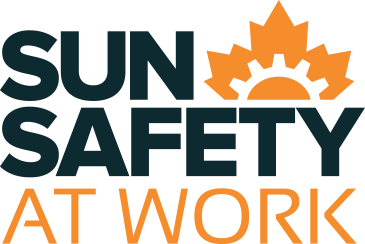Glossary beginning with E
E
- Electromagnetic radiation search for term
-
Electromagnetic radiation is a type of radiation that consists of varying electric and magnetic fields that can travel through space.
- Electromagnetic spectrum search for term
-
Electromagnetic radiation is grouped by wavelength and is generally arranged in order of frequency or wavelength to form the electromagnetic spectrum. The shorter the wavelength of the radiation, the higher its energy, and the more biological damage. The electromagnetic spectrum (from shortest to longest wavelength) is: gamma rays, x-rays, ultraviolet (UV) radiation, visible radiation, infrared radiation, microwave radiation, radiofrequency radiation, extremely low frequency fields. Our concern in sun safety is with UV and infrared radiation (heat).
- Elimination search for term
-
Elimination is the most effective control measure in the hierarchy of risk controls. It is more effective to eliminate the hazard at its source, therefore eliminating or removing the risk entirely. This is often done by designing or redesigning the workplace or the work task. Eliminating the sun is obviously not feasible, although it can be said that transferring outdoor tasks to indoors is of form of ’eliminating the sun’.
- Engagement search for term
-
Worker engagement, or worker participation, is critical to success in occupational health and safety. In a sun safety program is it desirable that workers are motivated to identify and assess risk from the sun, and to take appropriate action, rather than being passive. Education is a key element in ensuring worker engagement.
- Engineering controls search for term
-
Engineering controls are ’physical controls’ for reducing risk, rather than ‘people-centred’ controls (administrative controls). Examples are ventilation, shading, reflective surfaces, and UV filtering glass. In the hierarchy of risk controls, engineering controls should be considered before administrative controls. An optimal situation would be where engineering controls have reduced risk so much that administrative controls or personal protection are not needed. Personal protection, or personal protective equipment, are not considered to be engineering controls.
- Erythema search for term
-
Erythema refers to reddening of the skin and is commonly called sunburn. It is a photochemical response of the skin (redness due to vasodilatation and increased blood flow) following over-exposure to UV radiation, particularly UVC and UVB. The amount (or dose) of UV radiation required to cause erythema is described in terms of minimal erythema dose or standard erythema dose.
- Evaluation search for term
-
Evaluation is a systematic and deliberate process of judging the merits of something in comparison to a given criteria or standard. For our Model Sun Safety Program, this includes the assessment of how effective control measures are in reducing worker risks from exposure to the sun.
- Evaporation search for term
-
Evaporation is the change from a liquid to a vapour. Energy is needed to change a liquid to a vapour. When sweat evaporates from the skin, it means the sweat is changing from liquid water on the skin to water vapour in the air. The water vapour moving away from the skin is taking heat energy with it, and so there is a cooling effect at the surface of the skin. A breeze flowing over the skin will increase evaporation and therefore increase cooling of the skin. However, if the air near the worker’s skin is very humid (high in water vapour content), then sweat will have less of an ability to evaporate. If the air is so humid that it is saturated with water vapour, then a breeze will not be effective in evaporating the sweat and it will not have a cooling effect. Also see natural wet bulb temperature.
- Evaporation rate search for term
-
Evaporation rate is the speed at which a liquid changes to a vapour. More specifically, it refers to the speed at which sweat evaporates from the skin. Evaporation rate is affected primarily by wind over the surface of the skin and the level of humidity in the air. The greater the wind, the greater the evaporation. The greater the humidity, the slower the evaporation. The greater the evaporation rate, the greater the degree to which heat leaves the body and a worker is cooled down.
- Exposure search for term
-
Exposure refers to contact of a person with a chemical, biological or physical agent (for example, the sun). The amount of exposure is important in determining the level of risk posed by a hazard. See also radiant exposure.
- Exposure limit search for term
-
An exposure limit is the highest level of exposure (for example, dose of radiation or concentration of chemical in air) that has been determined to result in an acceptable risk to those being exposed (for example, the general public or workers). The acceptable level of exposure is usually based on an understanding of the adverse health effects from exposure to the hazard and the amount of exposure required to produce these adverse effects. The values for exposure limits are typically determined from experimental studies. As such, an exposure limit should not be considered as separating ‘safe’ from ‘unsafe’ exposures, but as providing a guide to ‘relative safety’ versus ‘possible adverse effects’. Also see occupational exposure limit.

